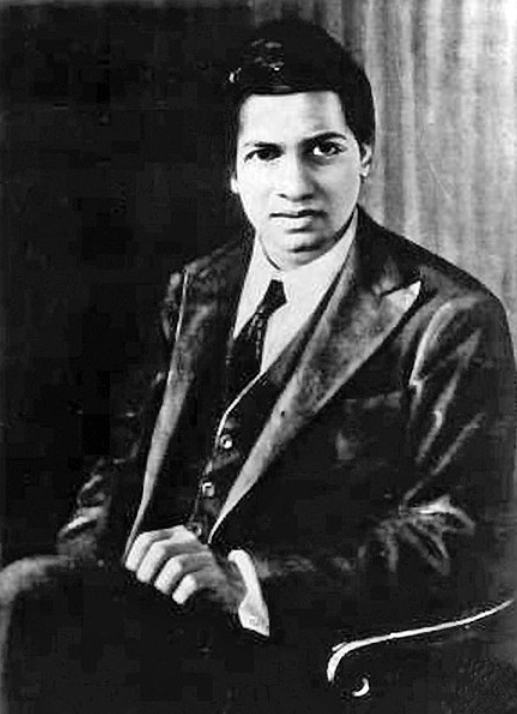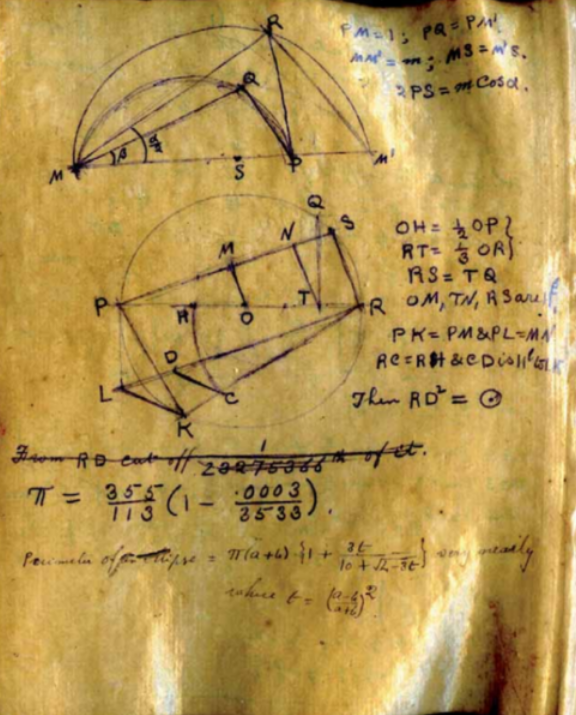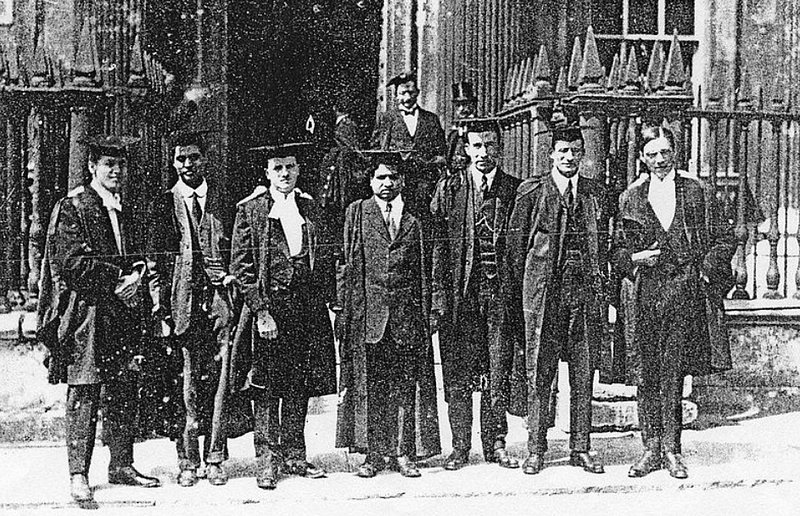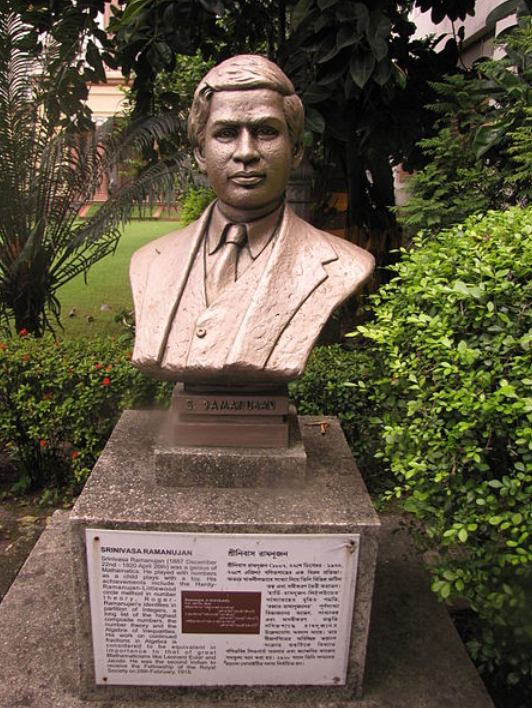The Inspiring Journey of a Mathematical Prodigy
Written on

Srinivasa Ramanujan was born in a quaint town south of Madras, now Chennai, in South India. He was the sole survivor among his mother's initial four children, highlighting the challenging health circumstances of that era. Moreover, he faced a severe bout of smallpox, a disease that took many lives.
From an early age, Ramanujan exhibited an extraordinary talent for mathematics. This passion became an obsession, providing him a refuge in a structured and fascinating numerical world, contrasting sharply with the unpredictability of his early life. He believed that his mathematical prowess was divinely inspired, often attributing his insights to the Hindu goddess Namagiri, whom he felt communicated with him through dreams.
Ramanujan's formative years were characterized by a relentless thirst for knowledge. Despite limited resources and no formal education in advanced mathematics, he remained undeterred. He frequently visited the nearby Sarangapani Temple, where he would engage in the unusual practice of writing intricate mathematical equations on stone slabs with chalk, a ritual that connected him to the divine source of his inspiration.
The pivotal moment in Ramanujan's mathematical journey occurred when he discovered A Synopsis of Elementary Results in Pure and Applied Mathematics, a compilation by George Shoobridge Carr. This collection, featuring 5,000 theorems rather than a traditional textbook format, landed in Ramanujan's hands during his teenage years.
Unlike standard mathematics textbooks that presented detailed explanations, Carr's work offered mere results and formulas. While this approach could be intimidating for many students, it served as an invitation for Ramanujan to independently explore and derive proofs for the theorems.
Engaging deeply with Carr's book allowed Ramanujan's innate mathematical intuition to flourish. The absence of detailed solutions fueled his creativity and problem-solving abilities, leading him to develop a comprehensive understanding of mathematical concepts that far surpassed what conventional education could offer at the time.
Through his independent study of the listed theorems, he began formulating his own theories and equations. This critical period of self-exploration was instrumental in honing Ramanujan's mathematical skills, and he started documenting his discoveries in notebooks—a habit he maintained throughout his life. These notebooks would later become pivotal to his mathematical legacy, containing original results and insights that influenced various mathematical fields.

Despite his emerging talent, Srinivasa Ramanujan encountered considerable challenges within the formal academic system. His intense focus on mathematics led to neglect in other subjects, preventing him from earning a college degree.
He enrolled at the Government Arts College in Kumbakonam, but his lack of interest in non-mathematical subjects led to the loss of his scholarship and subsequent expulsion. This pattern repeated at the University of Madras, where his poor performance in subjects outside mathematics again thwarted his educational aspirations.
These academic setbacks were distressing for Ramanujan, especially given his family's financial struggles. His father's modest income as a clerk barely covered living expenses, making the 32-rupee tuition fee a significant burden. Consequently, Ramanujan chose to abandon formal education, a difficult but necessary decision that allowed him to immerse himself fully in mathematics.
During this self-imposed isolation, Ramanujan's development as a mathematician flourished. Free from a structured curriculum, he delved deeper into his mathematical inquiries, often spending hours formulating new theories and tackling complex problems.
In 1911, Ramanujan began to publish his findings in the Journal of the Indian Mathematical Society, marking a significant milestone in his journey as a mathematician. This publication provided him with the academic acknowledgment that had eluded him due to his unconventional educational path. It introduced Ramanujan's unique mathematical approach to a broader audience, piquing the curiosity of his peers.
Around this time, significant changes occurred in Ramanujan's personal life. At the age of 21, following the customs of the day, his family arranged his marriage to Janaki, a nine-year-old relative. This new responsibility added complexity to his life but did not deter him from his mathematical endeavors.
His life took another turn when he secured a position as an accounting clerk at the Port of Madras, now Chennai. This job not only provided financial stability but also connected him with individuals who recognized his mathematical talent. His supervisor, an amateur mathematician, and the head of the port, a British engineer, encouraged him to pursue his mathematical explorations and reach out to notable mathematicians in England.
The support Ramanujan received at the Port of Madras was crucial in propelling him toward international recognition. Despite facing rejections initially, his persistence paid off when his letter to G. H. Hardy, filled with complex theorems, captured the attention of the Cambridge mathematician. This correspondence paved the way for his eventual move to England and collaboration with Hardy, cementing his status as a mathematical genius.
In 1914, Ramanujan arrived at Cambridge University, where his partnership with G.H. Hardy became one of the most celebrated collaborations in mathematical history. Together, they achieved groundbreaking results, particularly in number theory.

The collaboration between Ramanujan and Hardy represented a fascinating blend of different backgrounds and perspectives. Ramanujan's intuitive approach to mathematics, predominantly self-taught and driven by deep religious conviction, contrasted sharply with Hardy's rigorous, formal methodology.
Hardy, an atheist who valued strict mathematical proofs, exemplified the pinnacle of formal education and discipline. This intersection of Ramanujan's intuitive brilliance and Hardy's methodical rigor proved to be immensely fruitful, leading to significant advancements across various complex mathematical domains.
One of their notable contributions was to the theory of partitions, which opened new research avenues and influenced future generations of mathematicians.
However, Ramanujan's time at Cambridge was fraught with challenges. Adapting to a new cultural and academic environment, coping with the cold British climate, and the ongoing strains of World War I adversely affected his health. Yet, amidst these difficulties, his productivity and creativity thrived, bolstered by the stimulating academic environment and the support from Hardy and other mathematicians.
As Ramanujan's health began to deteriorate, the significance of his contributions became increasingly evident. His legacy, marked by a prolific output and the profound impact of his theorems, continued to expand, setting the stage for his eventual return to India and the recognition that would follow.
Ramanujan's final years were a blend of notable professional accomplishments and personal health challenges. After his fruitful period at Cambridge, his health, already compromised by the cold climate and dietary issues, deteriorated further.
In 1919, he returned to India, hoping that the familiar surroundings would facilitate his recovery. Despite receiving a warm welcome and acknowledgment for his mathematical contributions, his health continued to decline.

During his time in England, Ramanujan's work gained considerable attention. One of his notable accolades was being elected a Fellow of the Royal Society in 1918, one of the highest honors for a scientist in the UK. Additionally, he became a Fellow of Trinity College, Cambridge, making him one of the first Indians to receive such prestigious honors.
Despite these achievements, his health issues, primarily diagnosed as tuberculosis, overshadowed his return to India. The limited medical treatment options for his condition at the time led to a rapid decline in his health.
His final year was spent in relative isolation due to his illness, yet his passion for mathematics remained unwavering. He continued to work on his theories and correspond with colleagues in England, sharing his discoveries until the very end.
Ramanujan passed away on April 26, 1920, at just 32 years old. His untimely death was a profound loss for the mathematical community and the world at large. Nevertheless, the impact of his work persisted well beyond his lifetime. His notebooks, rich with unpublished results and theorems, became invaluable resources for mathematicians, inspiring numerous papers and new research directions.